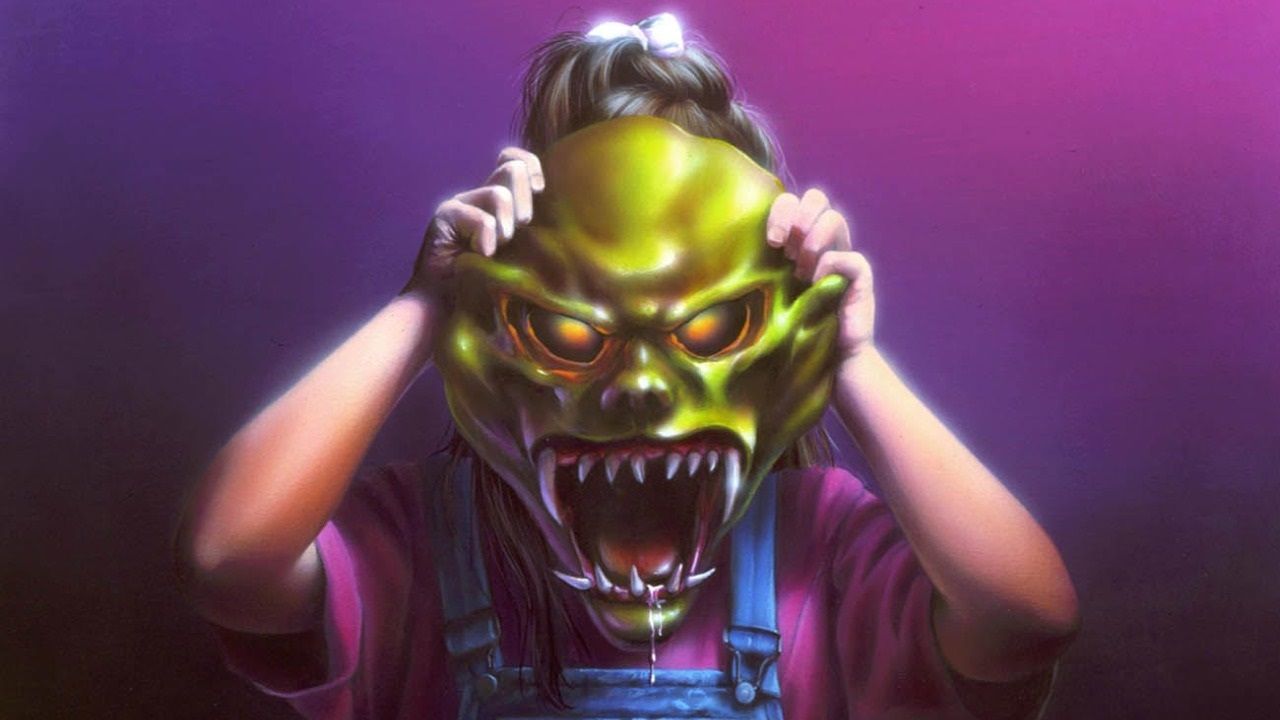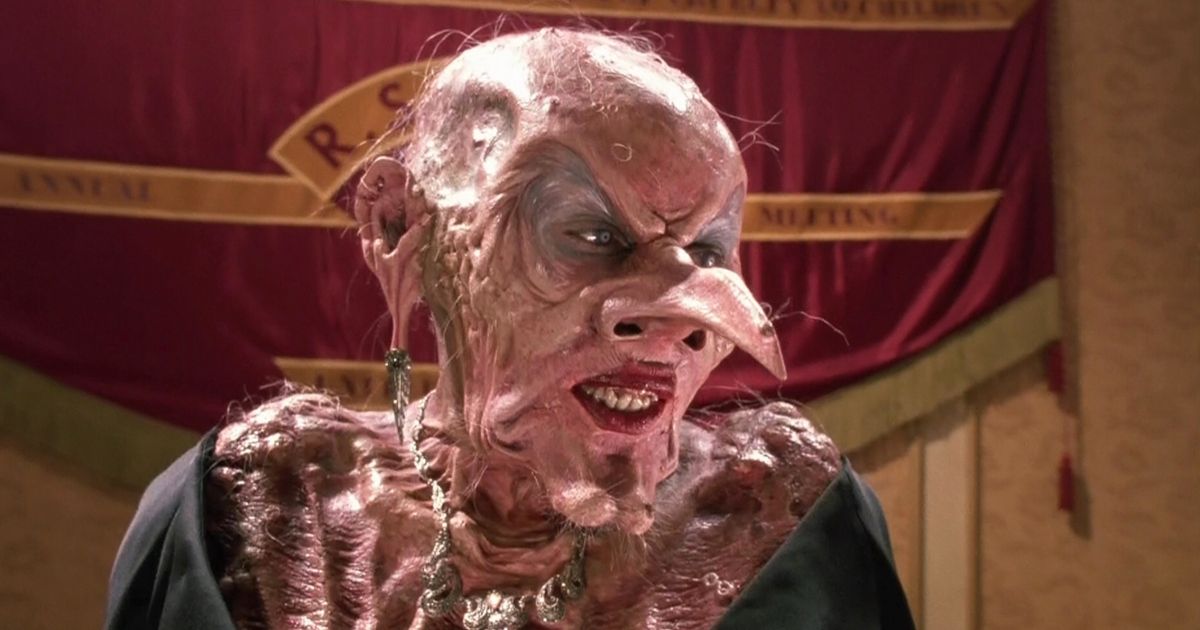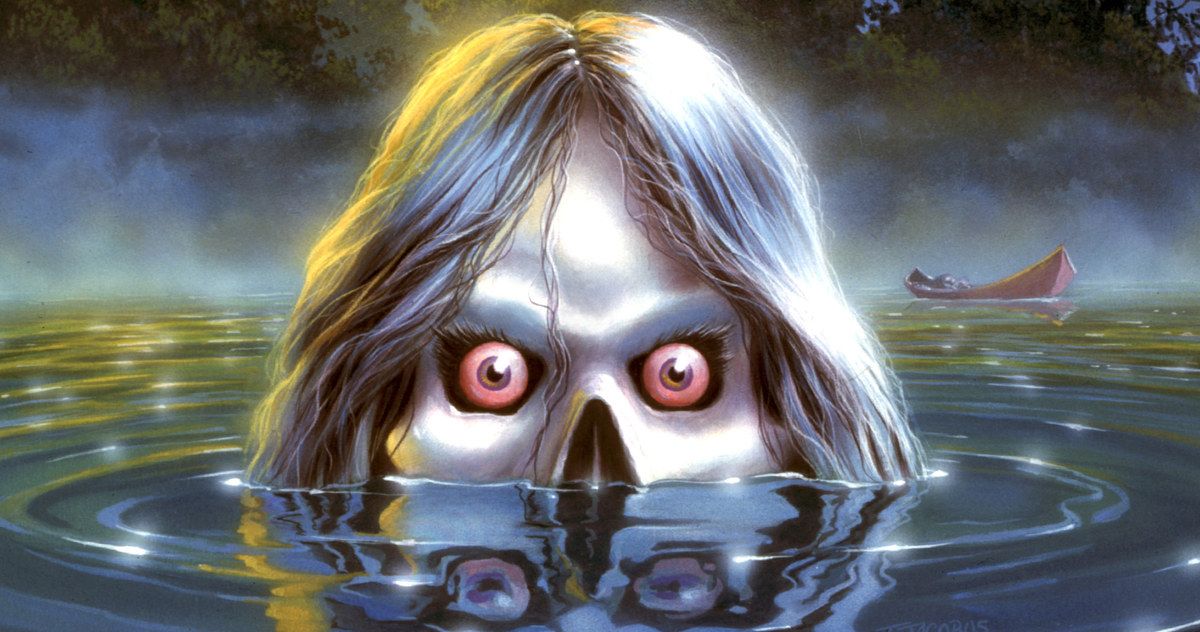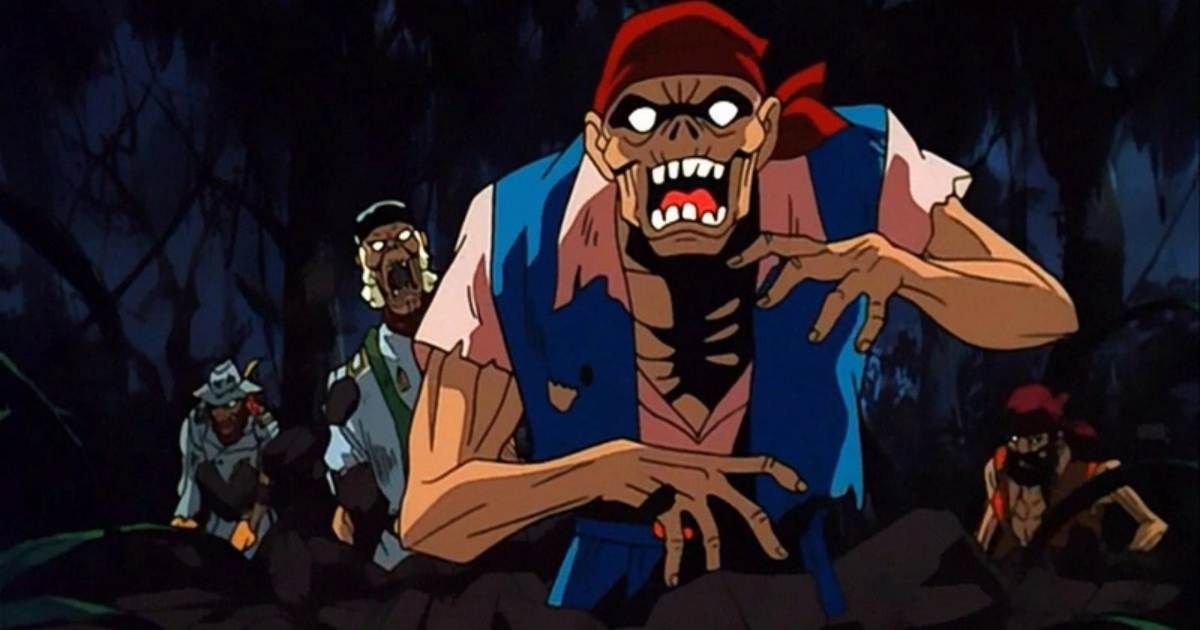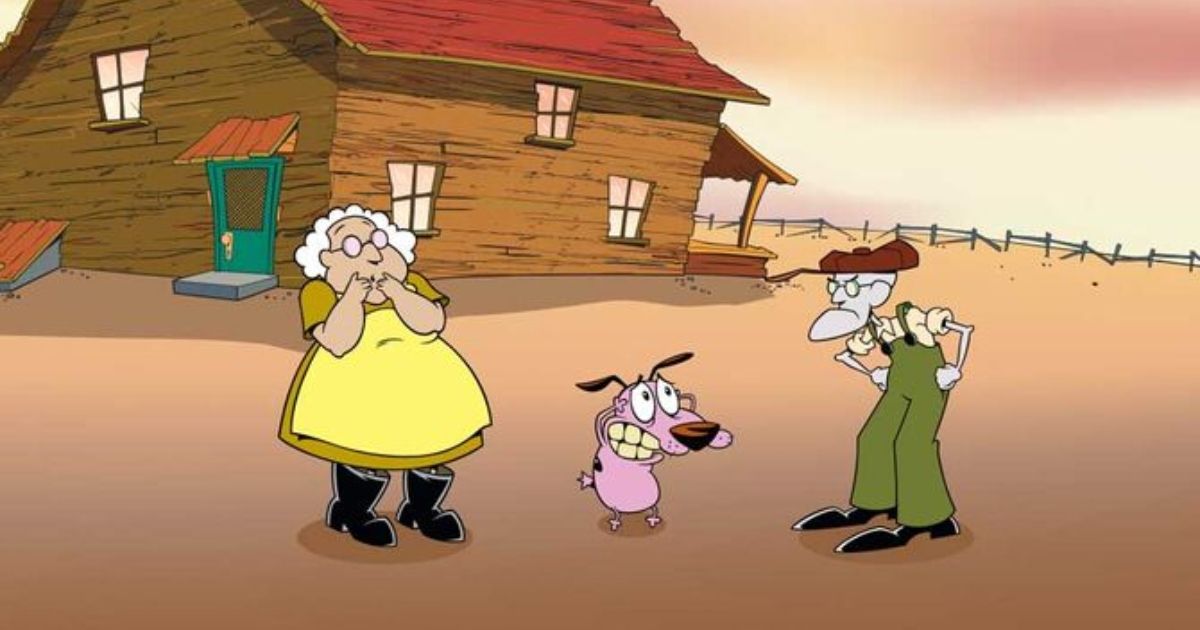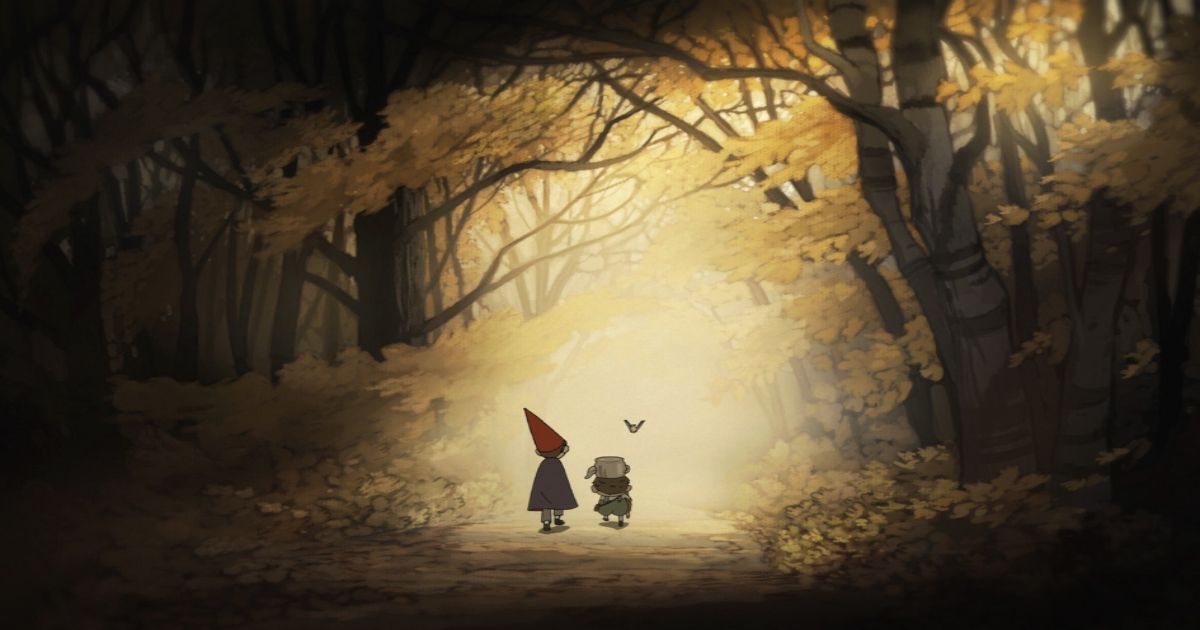Summary
- Modern kids entertainment is often too concerned about upsetting children to give horror a chance, but kids can handle more than we give them credit for.
- Kids found horror through gaming, social media, and internet culture, leading to the popularity of games like Five Nights at Freddy’s.
- Kids horror dominated culture in the ’90s and 2000s, with films like The Witches and Goosebumps, but has since faded due to controversy and parental concerns.
From books to video games to film and television, horror continues to be one of the most popular genres of storytelling in nearly every medium. There’s something about being scared by entertainment that people can’t get enough of. While horror continues to thrive to this day, most of it is made with mature audiences in mind, with kids content being left out of the equation in recent years. There are a few exceptions, but for the most part, it seems that modern kids entertainment is too concerned about risks of upsetting or traumatizing children to give horror a chance. However, kids can often handle more than we give them credit for, and “for kids” doesn’t mean something can’t be scary.
When the industry doesn’t meet the need for something, people will inevitably search for it in other places, which, in turn, has led to kids finding horror through gaming, social media, and internet culture, leading to the massive popularity of games such as Five Nights at Freddy’s, and content creators like Markiplier. However, there was a time in film and television where children’s horror dominated the culture, an era that started in the 1990s, and continued through the 2000s before eventually dying out.
Kids Films Get Scary
One of the best examples of frightening children’s horror came from the 1990 film adaptation of Roald Dahl‘s The Witches, in which a group of child-hating witches plot to capture children and turn them all into mice. The film contained many tense scenes meant to terrify its young viewers. The design of the witches and their physical transformations was truly the stuff of nightmares, and acted as effective moments of grotesque body horror that could frighten people of any age.
While not an immediate success, the film became a cult classic, and led to other witch-based children’s films like Disney’s Hocus Pocus. Another Disney horror-themed film that released around this time was the hit stop-motion animated movie, The Nightmare Before Christmas, whose gothic art style and creepy character designs introduced a whole generation of children to all things that go bump in the night. While not as disturbing as The Witches, these films helped contribute to the rapid growth of horror themes in kids entertainment.
Viewer Beware, You’re in for a Scare
While horror for kids was slowly becoming more of a trend, it didn’t truly take off until the introduction and astronomical rise of the children’s book series Goosebumps. Tim Jacobus’ haunting cover art paired with R.L. Stine’s chilling stories brought kids horror to the forefront of ’90s culture. Goosebumps would eventually go on to become the second best-selling book series of all time, second to only Harry Potter. The financial success and popularity of Goosebumps made horror in children’s media the most popular it had ever been, and led to horror dominating all forms of children’s entertainment for over a decade. For the kids who grew up with it, Goosebumps became an accessible gateway to more challenging forms of horror, and likely led to a growing interest in horror entertainment throughout their lives.
After the massive popularity of Goosebumps, the rest of the entertainment industry followed suit. A highly successful TV adaptation was made, exposing a whole new audience of viewers to the horrors of R.L Stine’s works. This would go on to inspire other kids horror programs such as Alone in the Dark. At this point, the kids horror boom was in full swing, with networks and production companies cashing in on the craze with their own works. The Disney Channel would go on to release a wide selection of horror-themed movies, such as the Halloweentown franchise, Can of Worms, and Smart House. Even non-horror-based kids shows made horror-themed episodes, or added more disturbing elements to them that wouldn’t have been there previously.
Scooby-Doo Fully Embraces Horror
Scooby-Doo, which was often horror-themed, but rarely scary, embraced this trend with the release of a much darker more horror-centric animated film series in which the Mystery Gang dealt with real supernatural threats, such as zombies and witches. Starting with the release of Scooby-Doo on Zombie Island, what were once guys in masks were replaced with real monsters that posed dangerous threats.
The classic Hannah Barbara cartoon antics were replaced with art and scene direction inspired by actual horror films. This new direction for the series led to massive critical and commercial success, with Zombie Island being regarded by fans as the greatest film in the entire franchise (per CBR). This creepier take on Scooby-Doo would continue into the live-action films during the 2000s before eventually being resanitized to its former, non-threatening self.
It Takes Courage to Face Your Fears
This trend would continue with Cartoon Network’s release of Courage the Cowardly Dog, another animated series about a dog fighting supernatural forces. The show was an instant hit, with the premiere being the highest-rated in the history of the network at the time, and the series quickly became one of the staples of Cartoon Network’s golden age. In the series, Courage would have to fight his fears every episode by protecting his sweet owner Murial from all kinds of monsters and shady characters. The designs of many of the antagonists throughout the series were made to be as creepy and unsettling to a child as possible, and many scenes would have surreal shifts in art style that would trigger the uncanny valley effect to add another layer of uneasiness.
The show’s villains often acted as allegories for the kinds of people in the world who would try to hurt you, but it always ended with them being defeated by Courage, with the episode ending with him resting calmly on Murial’s lap. The moral being: while there are forces out there who will always mean you harm, with a little courage, they can be overcome. It was an inspiring message that helped kids learn how to take control of the scary things in their own lives. The success of Courage spawned other cartoons with creepy/horror elements, such as The Grim Adventures of Billy and Mandy and Invader Zim, both of which continued to push the boundaries of what was acceptable in children’s entertainment.
The Current State of Horror For Kids
Unfortunately, the rise of all these pieces of children’s horror also bred controversy, which led to an ever-growing list of complaints from concerned parents. During the 2000s, parents became much more concerned over what their kids were being exposed to and how it was affecting them. The controversy led to series like Goosebumps and Courage the Cowardly Dog either being canceled or slowly dying out. Eventually, kids horror faded from popularity, with films like Monster House and Coraline becoming exceptions rather than the rule.
Today, kids horror is nearly non-existent in pop culture. Goosebumps would eventually get revived in the form of a film franchise, but while it has some fun elements for kids, both installments sorely lack the scares of their source material. The latest installment of Scooby-Doo, titled Scoob!, replaced the horror theme of the franchise entirely, instead opting to cash in on the superhero cinematic universe craze by introducing other Hannah Barbara characters. Popular cartoons such as Adventure Time, Steven Universe, and Over the Garden Wall would have a few genuinely unnerving elements of horror sprinkled throughout them, but all of those shows proved much more popular with the young adults who grew up during the kids horror boom of the ’90s, rather than the children of today.
It’s a shame because, when used correctly, horror can be a great outlet to build confidence, and teaches kids how to overcome the frightening things in their own lives. None of the films or shows discussed in this article were ever out to harm children. They never depicted real-world threats to kids such as violence or abuse from adults; they only meant to entertain and inspire them.
Today, kids are getting their horror from elements outside kids entertainment, with Mascot horror games such as Five Nights at Freddy’s and TV shows like Stranger Things being massive hits with young audiences despite not initially being made for them. Perhaps the future of kids horror lies within things geared more towards older audiences. With the right supervision, PG-13 horror productions such as M3gan, Stranger Things, and the Five Nights at Freddy’s movie could potentially be the new gateway for kids to enter the world of horror.


